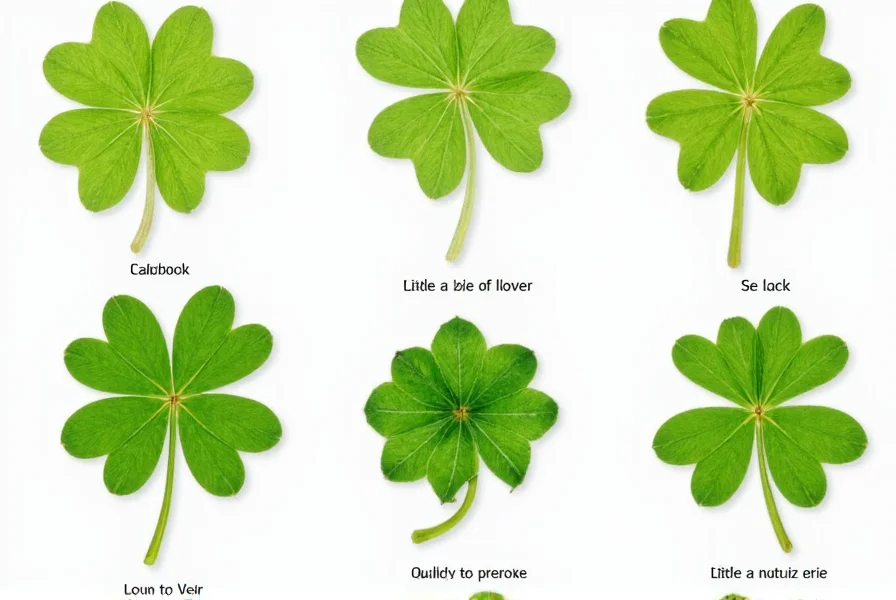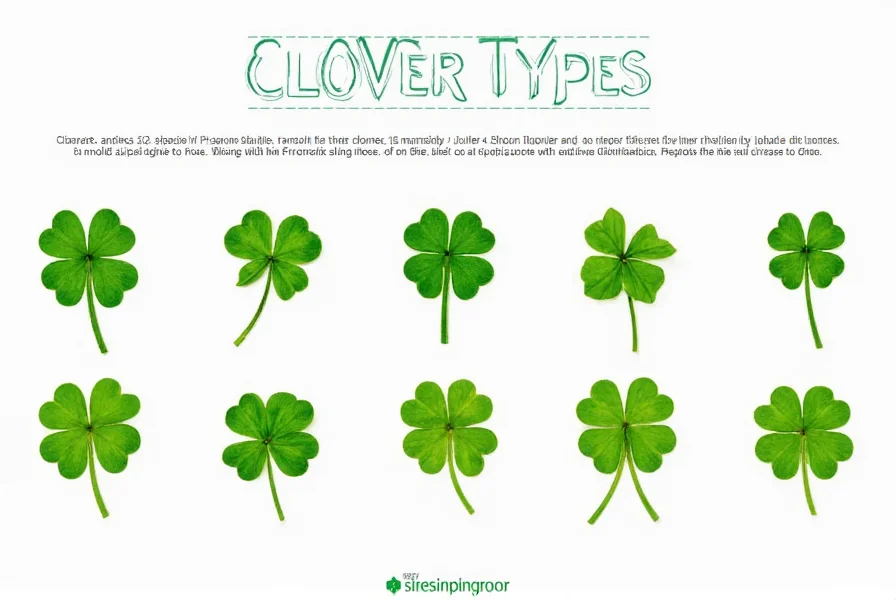When searching for accurate images of clover, understanding the different species and their visual characteristics is essential. This comprehensive visual guide provides detailed information about common clover varieties with identification tips that help distinguish between similar-looking plants.
Common Clover Species and Their Visual Characteristics
Clover plants belong to the Trifolium genus and share the characteristic three-leaf structure, though variations exist. High-quality images of clover reveal important identification features that differentiate species. Let's examine the most frequently encountered varieties:
White Clover (Trifolium repens)
White clover is one of the most widespread species, commonly found in lawns, pastures, and disturbed areas. When examining white clover images, look for these identifying features:
- Low-growing habit, typically 4-8 inches tall
- Round flower heads with numerous small white flowers (sometimes tinged with pink)
- Leaves with a distinctive pale crescent or "V" marking
- Creeping stems that root at the nodes

Red Clover (Trifolium pratense)
Red clover stands taller than its white counterpart and has become a popular subject for nature photography. When reviewing red clover flower pictures, notice these key characteristics:
- Height of 12-24 inches with upright growth habit
- Deep pink to purple flower heads
- Leaves with a more pronounced white chevron pattern
- Hairy stems and leaves
Alsike Clover (Trifolium hybridum)
Often confused with white clover, Alsike clover images reveal subtle differences that aid in proper identification:
- Intermediate height between white and red clover
- Flower heads that start white and turn pink with age
- Leaves without the distinct pale marking found in white clover
- Commonly used in pasture mixes and erosion control
| Clover Type | Height Range | Flower Color | Leaf Marking | Common Habitat |
|---|---|---|---|---|
| White Clover | 4-8 inches | White (sometimes pink) | Pale crescent/V-shape | Lawns, pastures |
| Red Clover | 12-24 inches | Pink to purple | Pronounced white chevron | Meadows, roadsides |
| Alsike Clover | 8-16 inches | White to pink | No distinct marking | Pastures, fields |
The Rarity and Significance of Four-Leaf Clovers
Among the most sought-after images of clover are those featuring the legendary four-leaf variety. While three leaves are standard for clover plants, the four-leaf mutation occurs naturally but rarely—approximately 1 in 5,000 plants. This genetic variation has captured human imagination for centuries, becoming a universal symbol of good luck.
When examining four leaf clover identification photos, note that true four-leaf clovers maintain the same leaf shape and structure as their three-leaf counterparts, just with the additional leaflet. Some clovers may appear to have four leaves due to leaf deformities or overlapping leaves, but genuine four-leaf specimens show four distinct, separate leaflets.
Where to Find Different Clover Varieties
Understanding clover plant identification guide information helps locate specific species for photography or study. White clover thrives in lawns and disturbed areas worldwide, while red clover prefers meadows and roadsides with richer soil. When searching for wild clover species photos, consider these habitat preferences:
- White Clover: Common in lawns, parks, and agricultural fields across temperate regions
- Red Clover: Found in meadows, roadsides, and abandoned fields, particularly in North America and Europe
- Microclover: A smaller variety increasingly used in lawn mixes for its drought tolerance
- Black Medic: Often mistaken for clover, with yellow flowers and a more upright growth habit
Clover's Ecological Importance and Practical Uses
Beyond their visual appeal in nature photography, clovers serve important ecological functions. As legumes, they fix nitrogen in the soil, improving fertility for other plants. This characteristic makes them valuable in crop rotation systems and sustainable gardening practices.
Gardeners increasingly seek images of clover as a lawn alternative, recognizing its benefits over traditional turf grass. Clover lawns require less water, no fertilizer, and naturally suppress weeds while providing nectar for pollinators. When researching clover plant identification guide resources, you'll discover growing interest in using clover as a sustainable ground cover.
Photographing Clover: Tips for Capturing Quality Images
Whether you're a nature photographer or simply documenting plants in your yard, these tips will help you capture better images of clover:
- Shoot during morning or late afternoon for soft, directional light that highlights texture
- Use a macro lens or macro mode to capture intricate flower details
- Include a reference object (like a coin or finger) for scale in identification photos
- Photograph both the flowers and leaves from multiple angles for complete identification
- Look for dew-covered clover early in the morning for striking visual effects
Common Misidentifications: Clover vs. Look-Alikes
Many plants are mistaken for clover in amateur photography. When reviewing images of clover, be aware of these common look-alikes:
- Oxalis (Wood Sorrel): Has similar leaf structure but produces yellow or pink flowers and folds leaves at night
- Black Medic: Features yellow flowers and more upright growth than white clover
- Young Poison Hemlock: Can resemble wild clover but has purple-spotted stems (highly toxic)
- Lucky Clover (Oxalis deppei): A houseplant often sold as "good luck plant" with shamrock-shaped leaves
Accurate identification matters, especially when foraging or using plants medicinally. Always consult multiple reliable sources when identifying plants from images alone.











 浙公网安备
33010002000092号
浙公网安备
33010002000092号 浙B2-20120091-4
浙B2-20120091-4